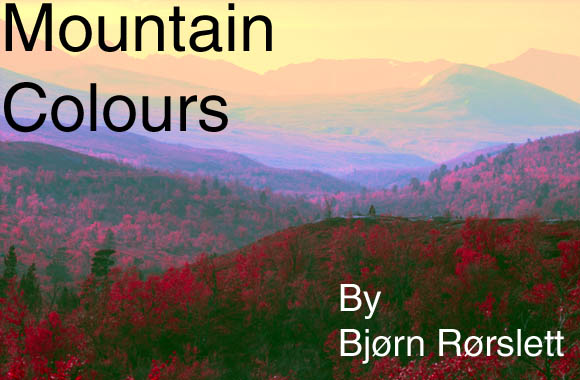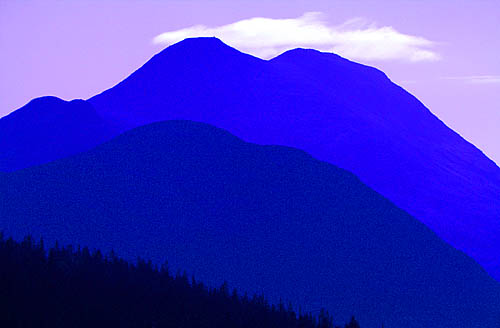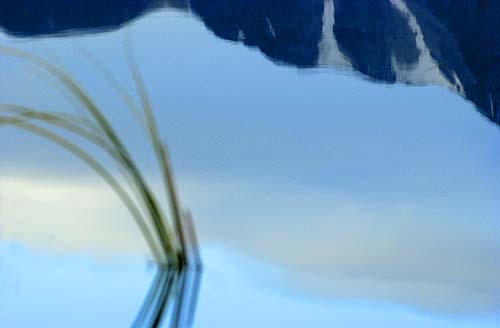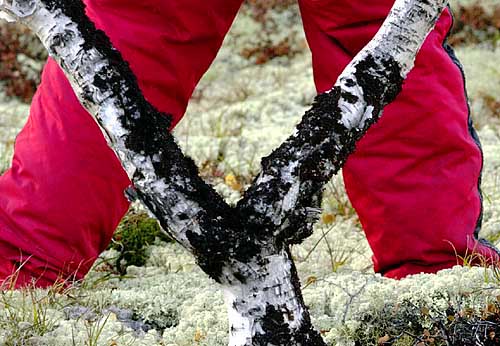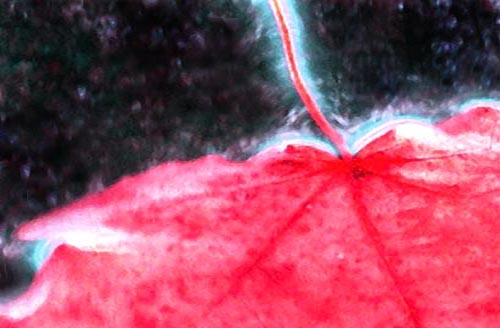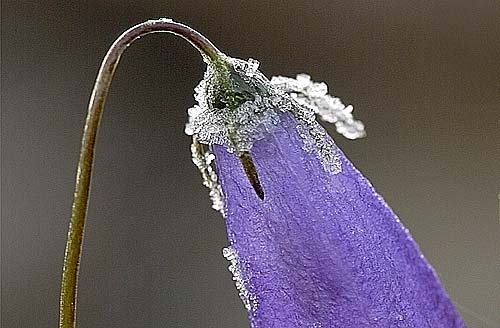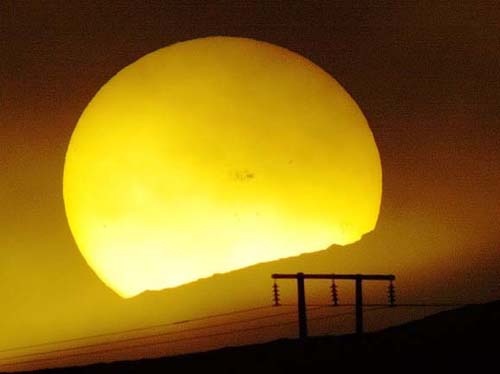| Finally, I had cleared a time-slot on my agenda wide enough to allow a trip into the Norwegian mountains, just in time to capture those vibrantly rich autumn colours. This would be the first time I brought my D1 into a mountainous setting. My D1 has seen plenty of Norwegian countryside and seaside this year, but not the real wilderness of our National Parks. The 'inside' tip of hardened Norwegian nature photographers is going to the lovely Dørålen Valley within Rondane National Park, Central Norway, preferably around mid September. The autumn colours tend to be extraordinary vivid in this dry alpine landscape, and there is easy access by an unsealed road to the proximity of the best shooting locations - what more can a busy pro photographer wish for? And, if you feel inclined to exercise a little more, mountain trails are plentiful for short or long hikes. |
| I added a number of lenses to my standard D1 setup to give opportunities to landscape and experimental photography. For that really long reach, I packed my 300 and 500 mm Nikkors together with the trustworthy old-timer 50-300 mm f/4.5 ED, the latter being a near perfect lens for travel and general-purpose landscape shooting with the D1. These manual lenses are modified by adding a matrix chip to make them fully compatible with the D1, something I feel is highly recommended for getting good exposures with MF lenses. I also brought my UV-Nikkor 105 mm f/4.5 for experimental work, ED 200 mm f/4 Micro-Nikkor and PC-Micro-Nikkor 85 mm f/2.8 for close-ups, together with the ubiquitous AFS-Nikkor 17-35 mm f/2.8. To be on the safe side, I added an F5, a Hasselblad XPan for panoramic vistas, and an Arca-Swiss F-line 6x9/4x5" view camera with lenses from 65 to 500 mm. Three Sachtler tripods, maps, field books for identification of flora, fauna and geology, several backpacks with my Toshiba laptop, battery chargers, a Fujitsu MO-disk drive for external digital image storage, and various odds and ends all contributed to make my little red Peugeot car into a huge, 4-wheeled equipment bag. Evidently, those hikes will have to wait a bit longer for me. |
| As it all turned out, I did nearly all shots on my D1 to give me over 15 GB of NEF (raw format) files, a healthy output for just a week of shooting. In addition, I had acquired a few hundred film-based images to put through my scanners as well. What a pity you become so prolific a photographer just by having a digital camera ... |
| During the entire trip, the D1 went on to do its job without any problems. Although the temperatures were below the freezing point nearly every day, at least in morning and evening, D1 ran smoothly and consumed just one or a maximum of two battery packs a day. I use all lenses in manuel mode and this practice clearly extends battery life. However, I also frequently examine the LCD exposure histograms and this tends to eat battery power. Taken as a whole, I had no problems with the power consumption of D1 in the field. |
| In fact, I'm continue to be amazing how easy digital photography has become, once a proper workflow is set up for the D1 images. I shoot only NEF files with my D1, and these are run through Bibble batch processing afterwards, before the final adjustments in Photoshop. Some images, in particular those obtained with my UV-Nikkor, are better taken care of by Nikon Capture software (the colours really are that weird!). Although I changed lenses a lot, I encountered insignificant problems with dust and dirt on the CCD. I cleaned out the camera every morning and evening with canned air. To avoid stains I always clean the lens mount and mirror first, so any propellant residue settles there instead of onto the CCD itself. |
| I have culled a few
pictures just to indicate the diversity of images
obtained on that trip. Where did all those magnificent
autumn colours go? Well, a few night's worth of harsh
frost spells had taken their toll of the autumn palette,
and my peculiar photographic inclinations did the rest. All images © Bjørn Rørslett-NN/Nærfoto 2000 |
The deepening dusk casts a magic colour spell over mountain ridges (MF 300mm f/2.8 Nikkor plus TC14C teleconverter). |
Solitary sedges are set against the mirror image of the Rondane range (50-300 mm f/4.5 ED) |
Self-portrait with mountain birch (50-300 ED f/4.5 Nikkor) |
Ultraviolet rendition of a fallen leaf at water's edge (UV-Nikkor 105 mm f/4.5 ) |
Hoarfrost on alpine harebell flower (Micro-Nikkor 200 mm f/4 ED) |
Power lines and pylons criss-cross the countryside and can enhance the odd sunset picture. Sunspots add to the attraction of the big solar disc (500 mm f/4 Nikkor with 2X converter) |
